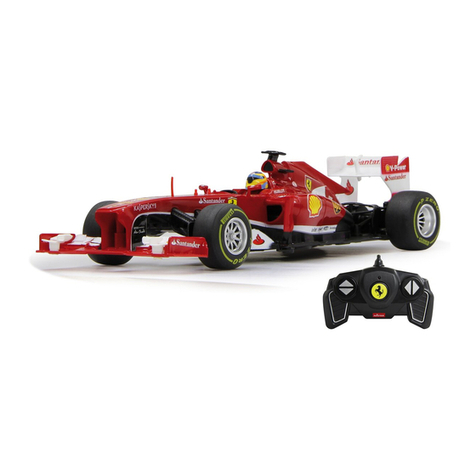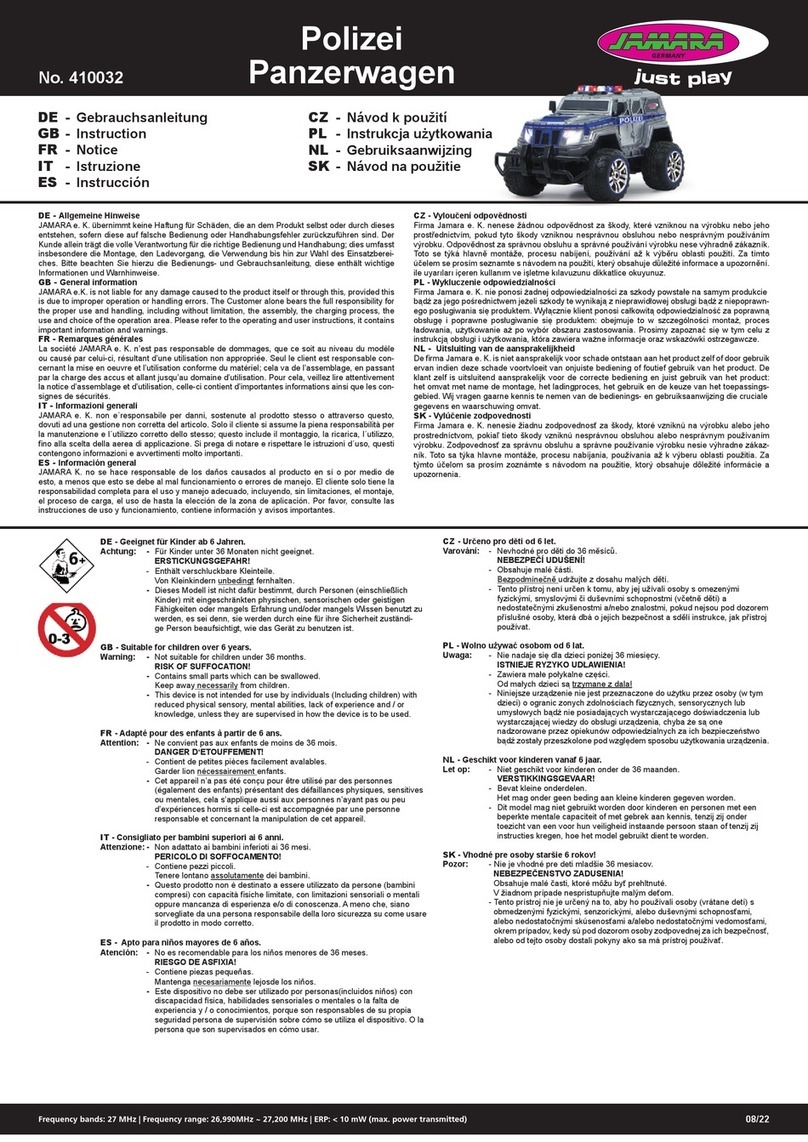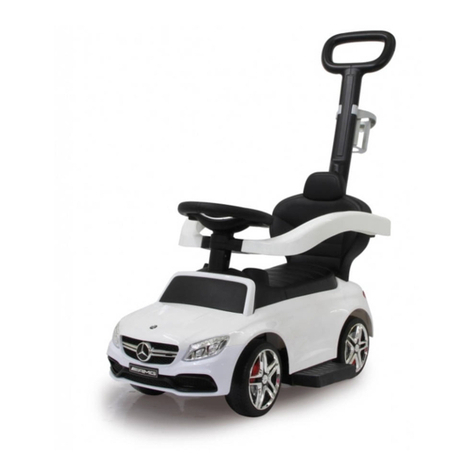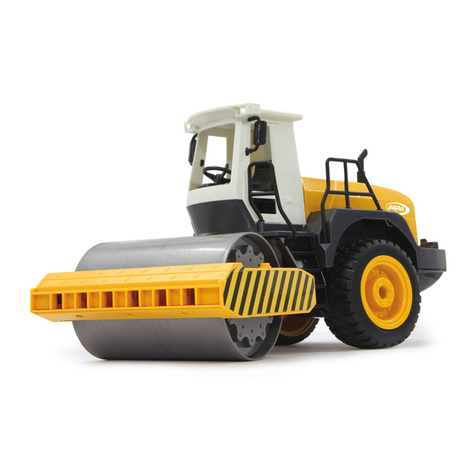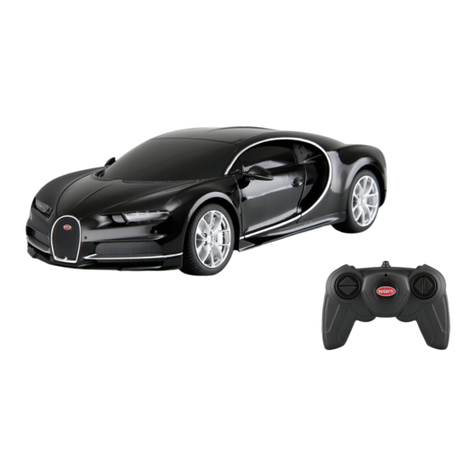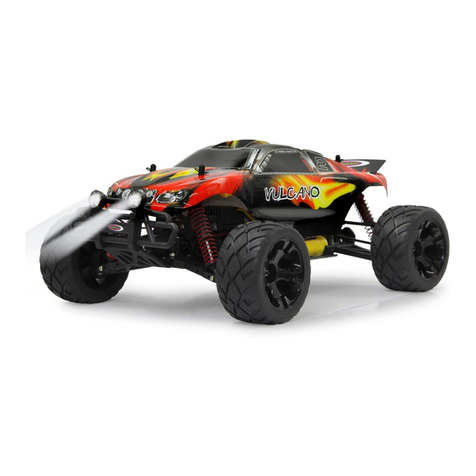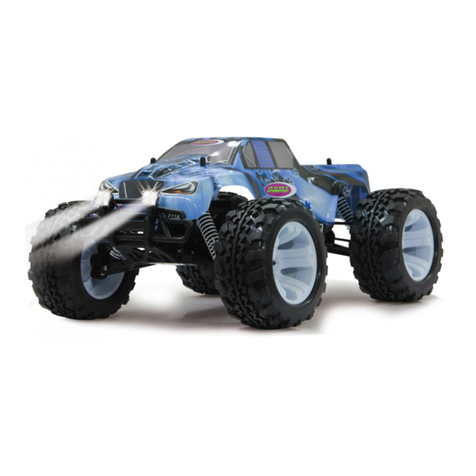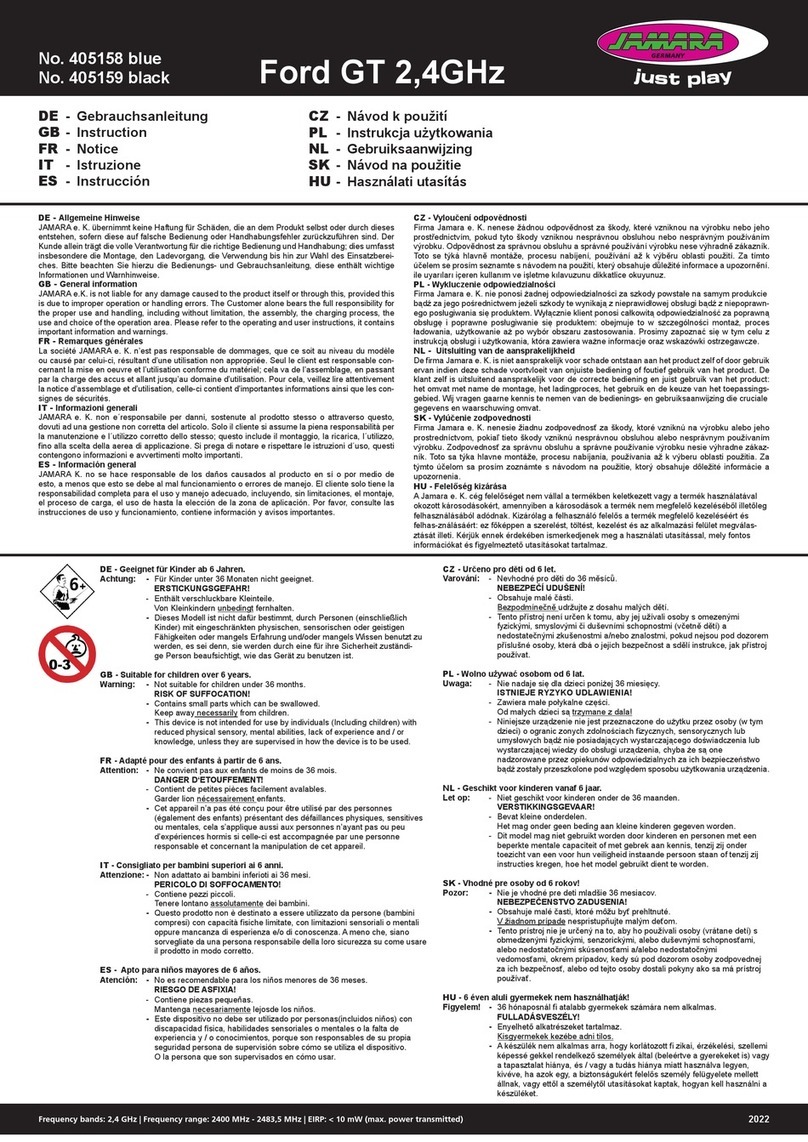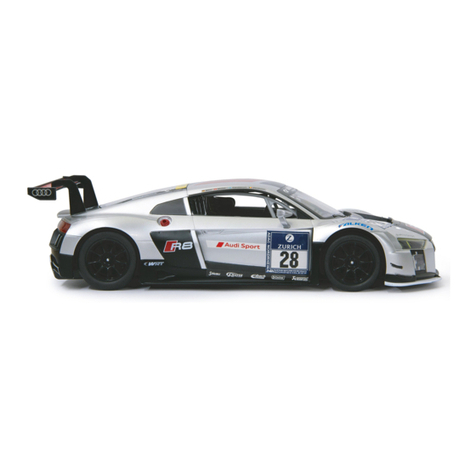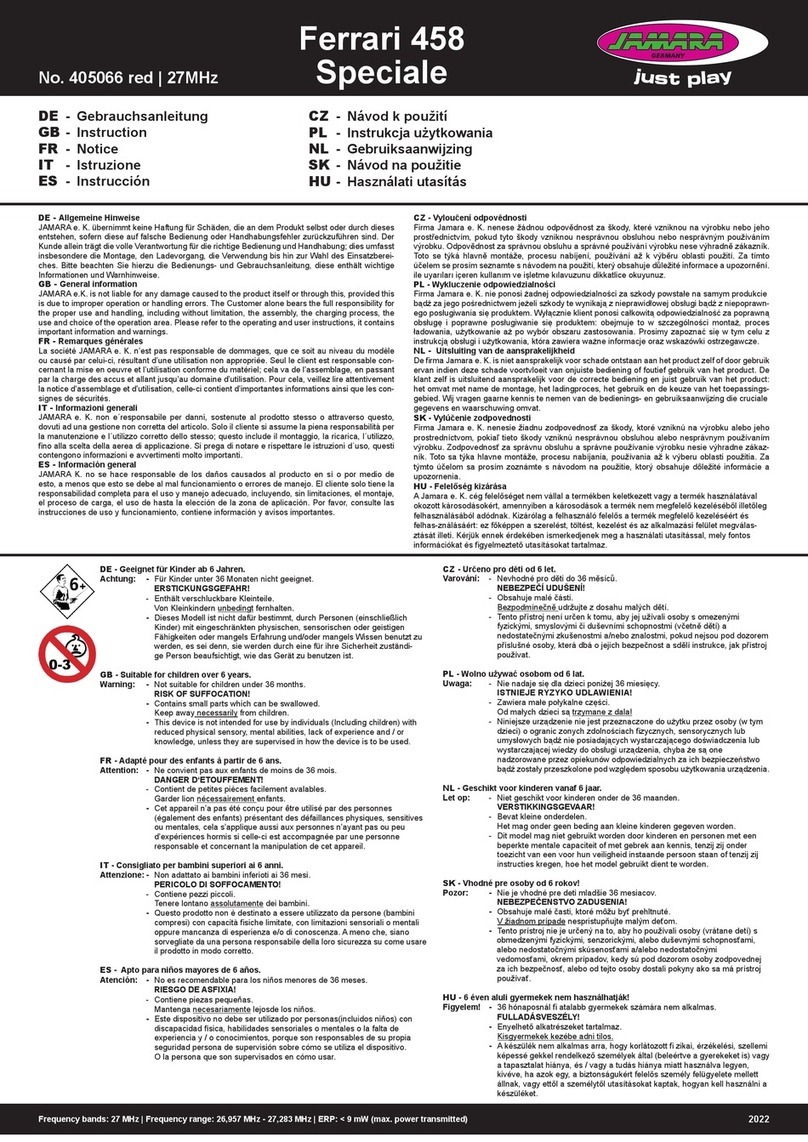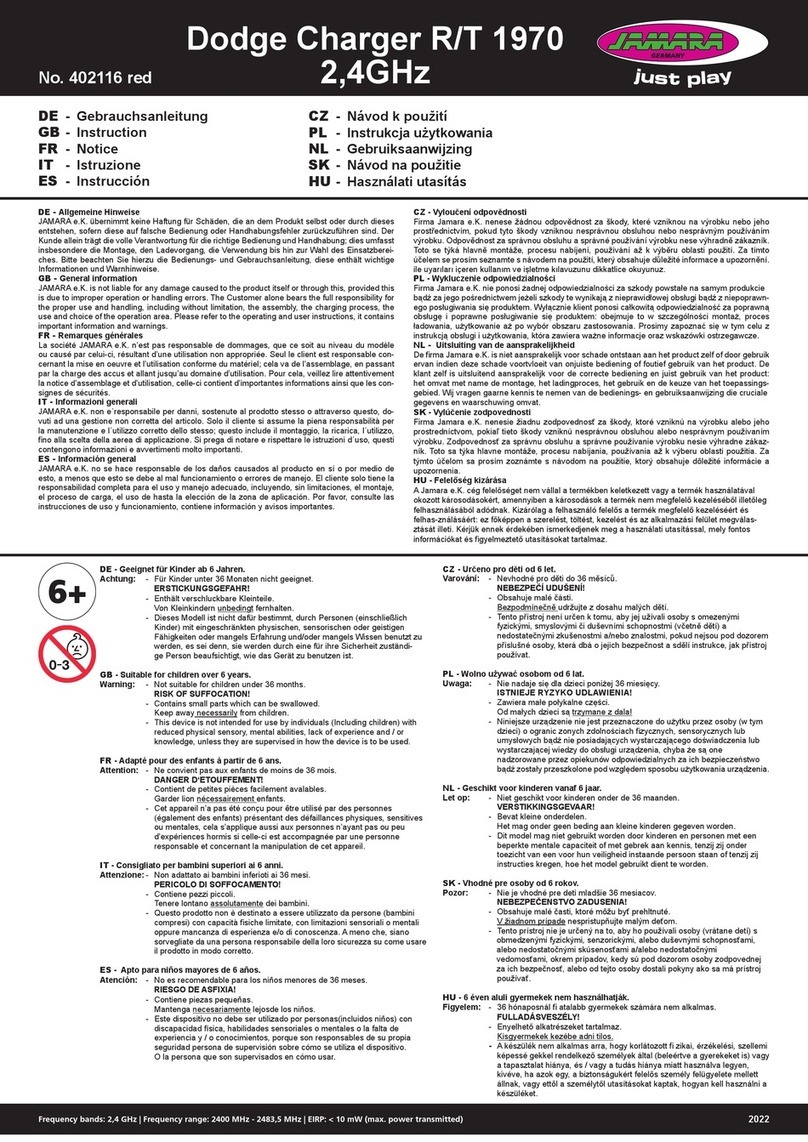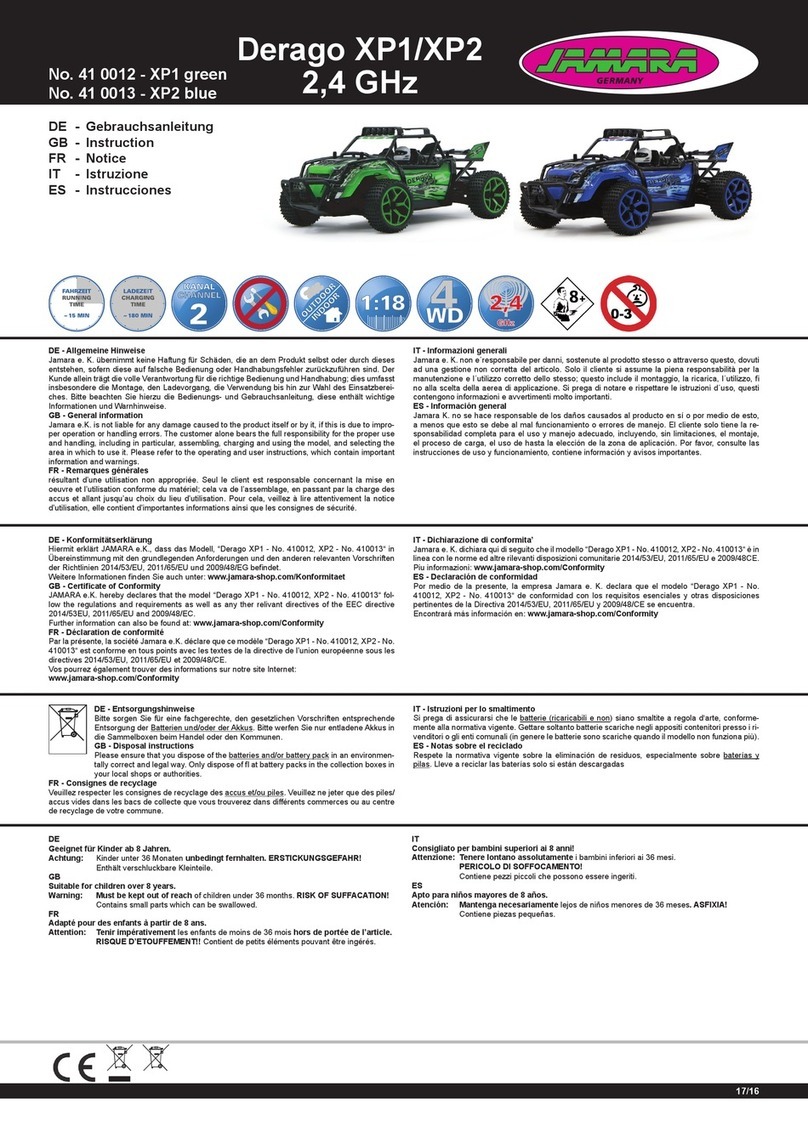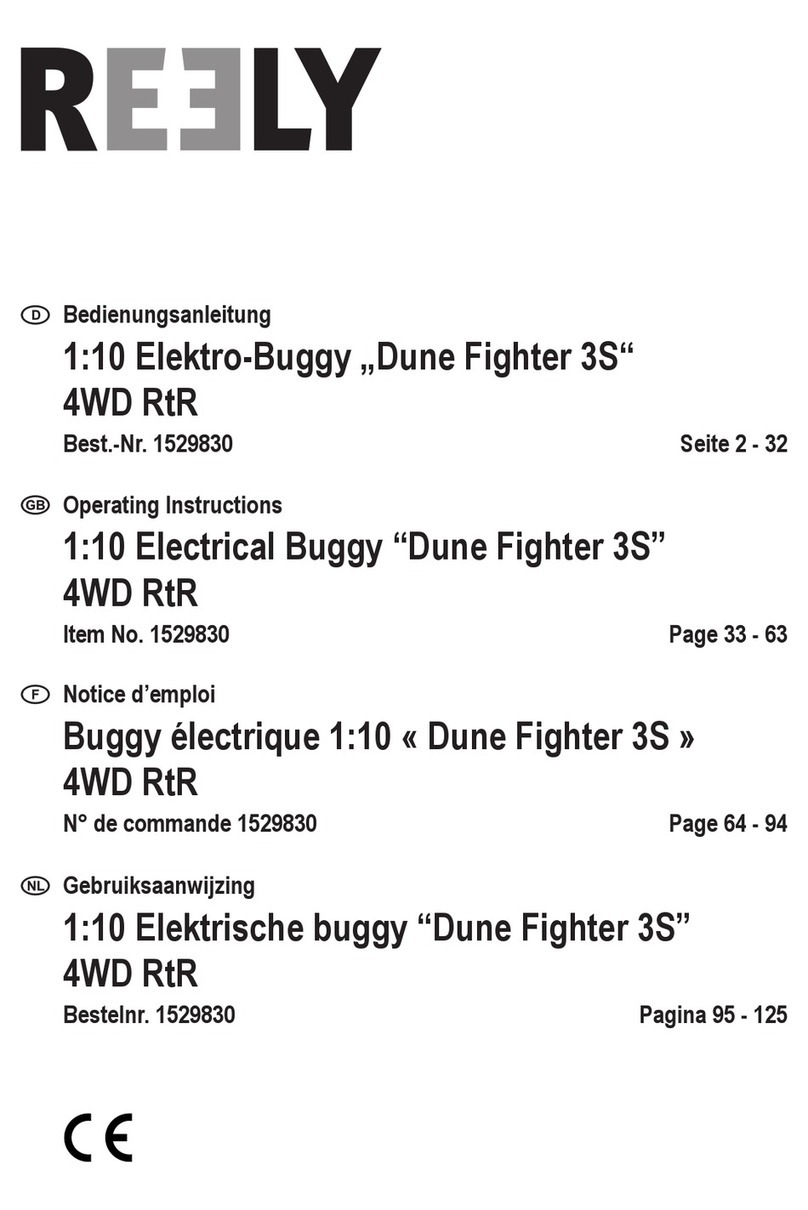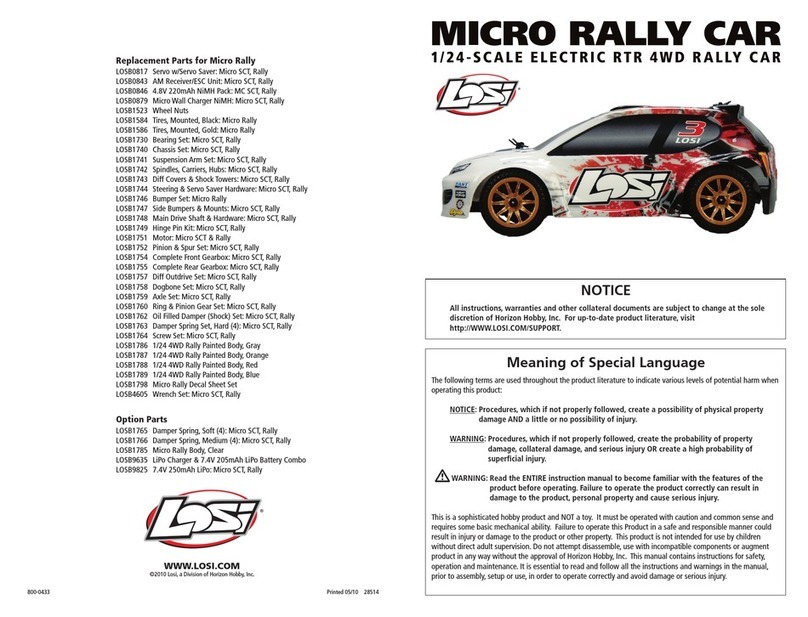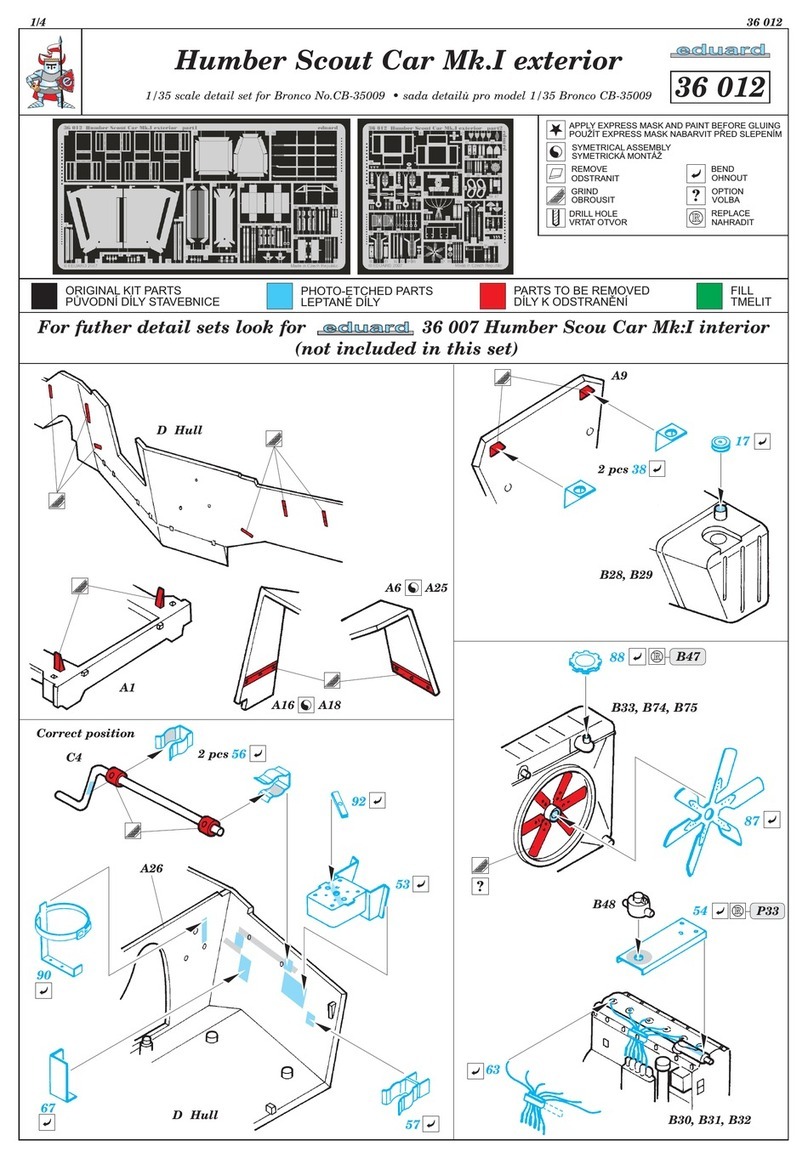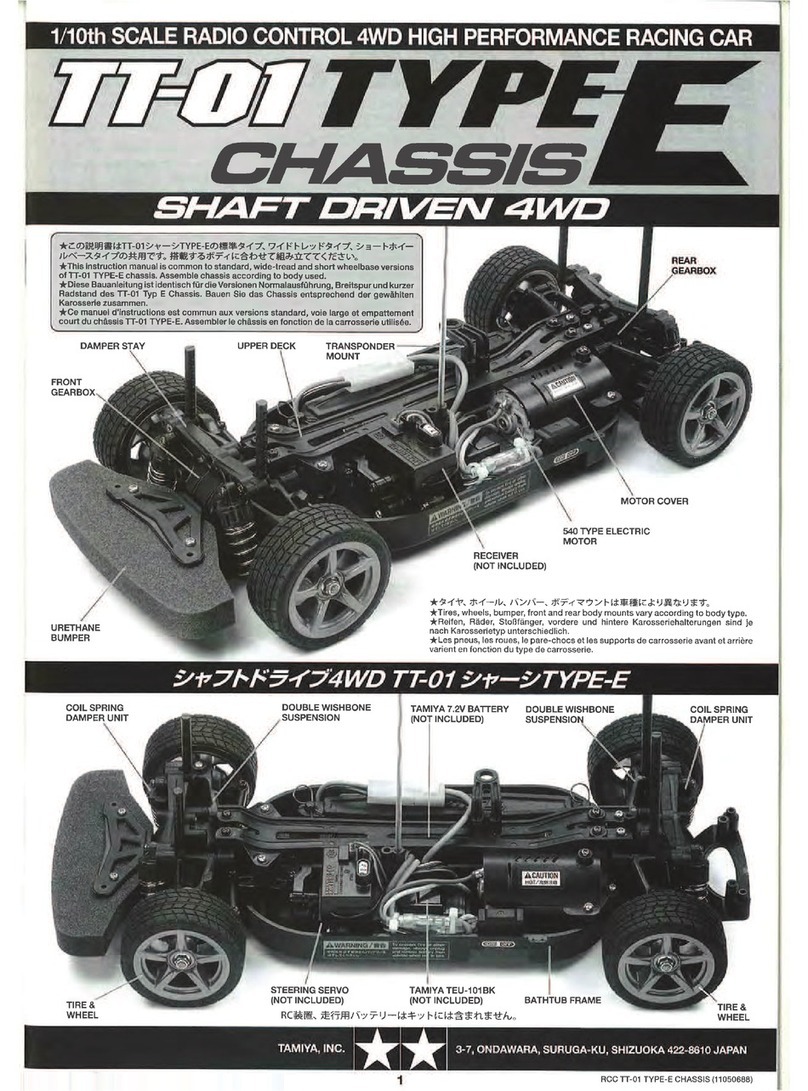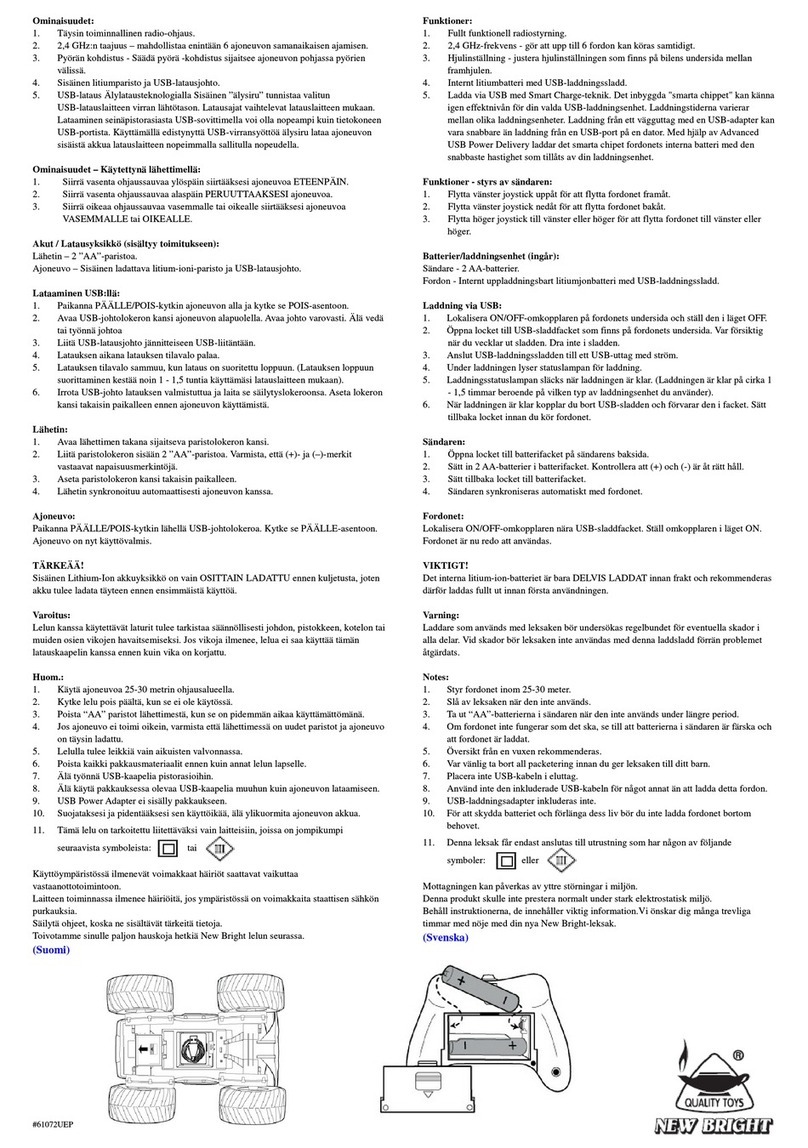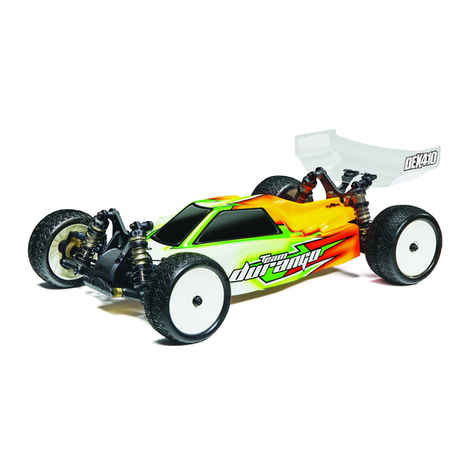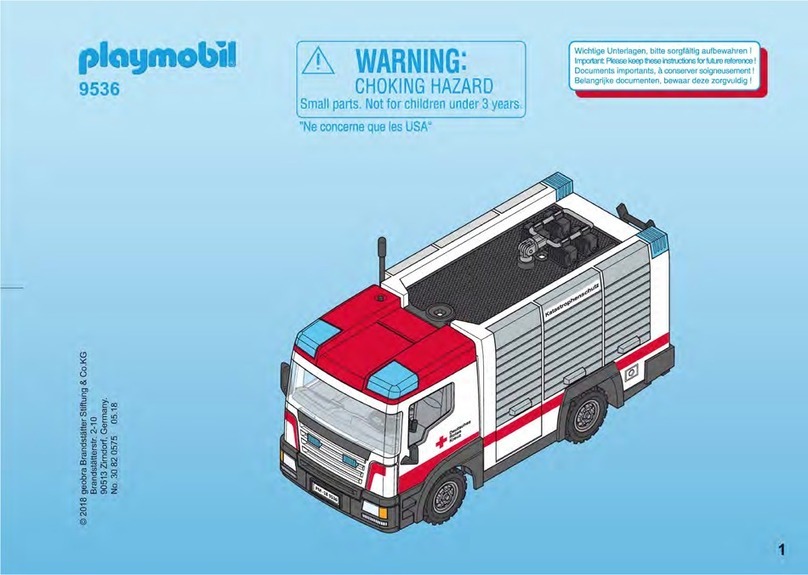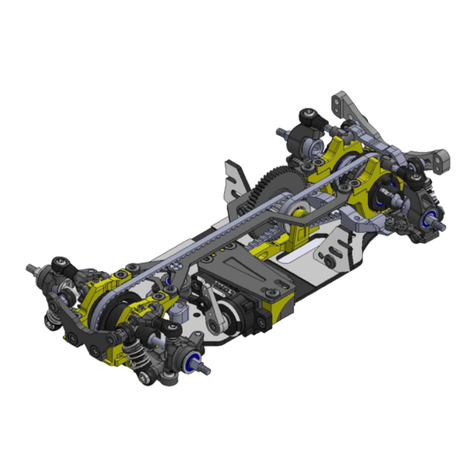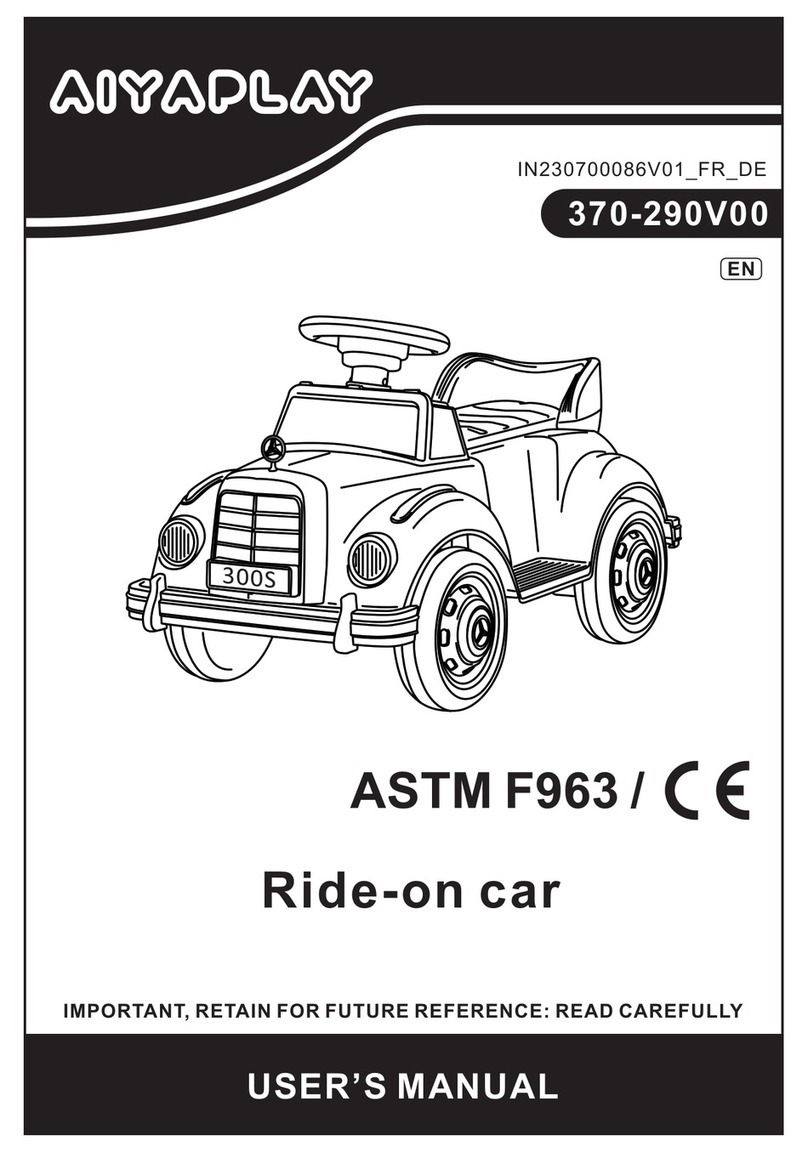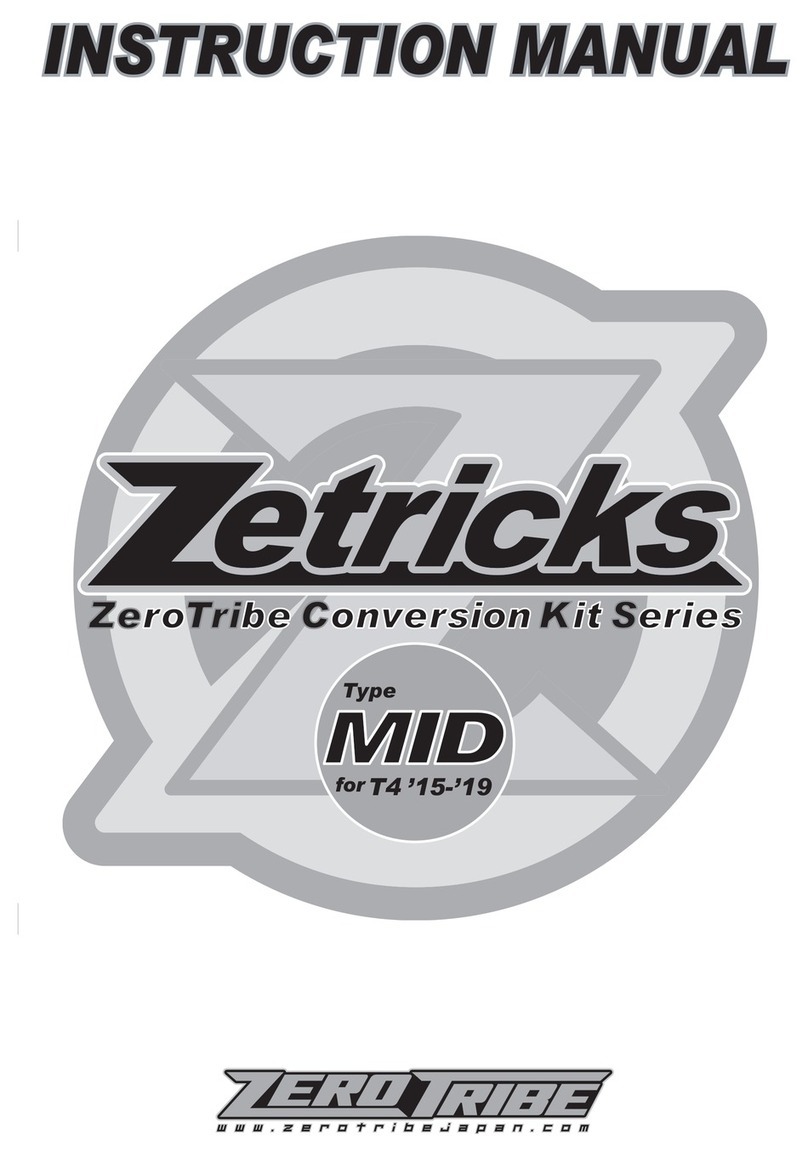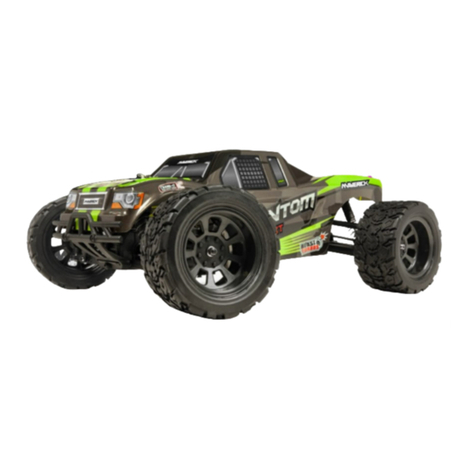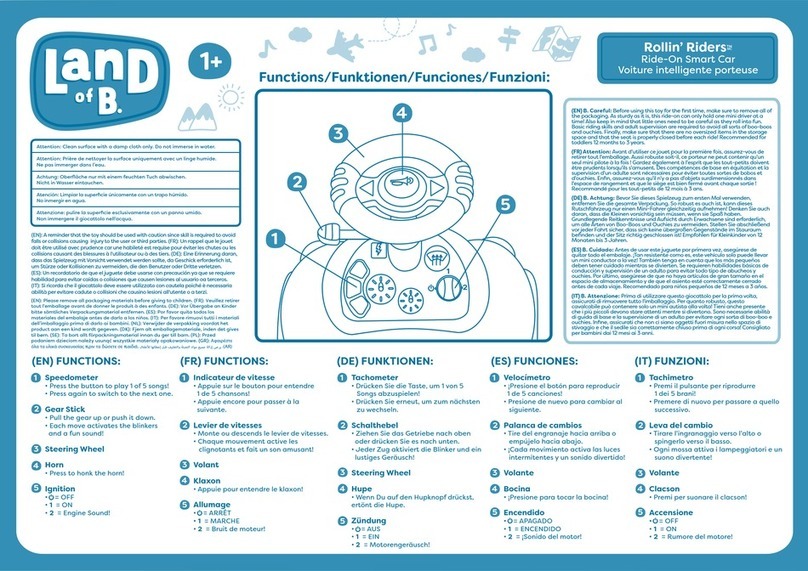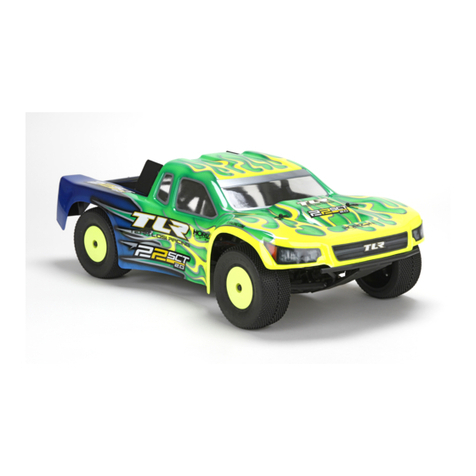
2
Adapteur/
Charging adapter
Chargeur/
Charger
Chargeur/Charger
Accu/Battery
Accu/Battery
Vers. 053368
Vers. 053369
Reglulateur
ESC
ON/OFF
Accu/Battery
FR - Premiers pas
Assurez-vous d’avoir toutes les pièces prévues dans le kit.
Emetteur, modèle, chargeur, accu de propulsion (en place).
Dans un premier temps il faut charger l’accu de propulsion.
Branchez le chargeur sur une prise secteur 230V. Connectez
celuici avec l’accu de propulsion.
Si le connecteur du chargeur et le connecteur de l’accu ne
devait pas corre- spondre vous avez un adaptateur à votre dis-
position dans le kit. La durée moyenne de charge de l’accu de
propulsion déchargé livré dans le kit est d’environ 6 - 8 heures.
Placez 4 piles type AA ou accus correspondants dans
l’émetteur. Si vous utilisez des accus pour alimenter l’émetteur
il faut tout d’abord les charger avec un accu acheté séparé-
ment.
Lisez attentivement le chapitre concernant votre radiocomman-
de et ses éléments de commandes.
Mettez en route l’émetteur et assurezvous que les trims soient
bien en position de neutre pour chaque fonction. Vous avez
acheté un modèle RTR. De ce fait votre voiture est préparée en
grandes lignes pour être utilisé de suite.
Néanmoins il est important de véri er avant et après chaque
utilisation qu’il n’y ait pas de dégâts mécaniques ou de prob-
lèmes électriques. De même il faut contrôler toutes les pièces
mobiles qu’elles soient libres de toutes contraintes, sans jeu et
que toutes les vis soient correctement serrées. Mettez
en place l’accu de pro dans son compartiment. Veillez à ce que
le support d’accu soit à nouveau bien xé avec les deux goupil-
les et que l’accu de propulsion est bien xé dans son support
sans grand jeu. Connectez l’accu de
propulsion avec le régulateur du modèle. Tenez la voiture en
l’air au cas où lemoteur démarrerait brutalement lors de la mise
en marche. Mettez en marche le régulateur avec le bouton On/
Off. Posez le modèle sur le sol et testez le bon fonctionnement
des différentes commandes. Directionnel gauche/droite,
vitesse avant/arrière. Si les roues ne devaient pas être droites
vers l’avant alors que le volant de l’émetteur est au centre il est
possible de réci er cette position à l’aide du trim sur l’émetteur.
Trim L/R = direction
Trim V/R = avant/arrière
Si les roues devaient tourner en avant ou en arrière alors que
vous n’avez pas touché à la commande des gaz, il faut com-
penser cette action en utilisant le trim de la fonction gaz jusqu’à
ce que les roues restent immobiles.
Nous vous conseillons maintenant d’activer la fonction Failsafe
de votre récepteur. Cette fonction est désactivée en sortie
d’usine. Vous pouvez activer la fonction Failsafe en laissant le
manche des gaz de l’émetteur en
position de neutre (voir chapitre Fail Safe) et en appuyant sur
la touche Failsafe de votre récepteur jusqu’à ce que la LED
clignote puis en relâchant la touche. N’activez cette fonction
qu’avec le manche des gaz en position de neutre pour une
voiture électrique a n que la fonction gaz du modèle,
en cas de perte de signal, se place automatiquement en
position ralentie dé nie au préalable.
Maintenant vous pouvez effectuer un circuit test avec votre
voiture. Si ce modèle est votre première voiture radiocomman-
dée nous vous conseillons de faire rouler votre modèle sur une
petite piste de test a n de vous familiariser avec les différentes
fonctions de celui-ci et de votre émetteur.
GB - Getting Started
Make sure that all parts from the box content are included.
Transmitter, Car, Charger, battery pack.
The battery pack has to be charged before use. Plug the charger
into a 230V outlet. Connect the charger to the battery. If the plug
of the charger and battery do not match, then you will nd a
connection lead in your box. The average charging time of the
empty battery is about 6 - 8 hours.
Place 4 pieces of AA batteries into the transmitter. If rechargeba-
le, please also make sure these are fully charged.
Read the chapter for usage of the transmitter and its controls
carefully.
Turn the radio off and make sure all the trim buttons on the trans-
mitter are in neutral position. You have purchased a RTR model,
which means it should be ready for immediate use after charging
all batteries. You need to check the car, electronics and all plas-
tic parts after each use to make sure no parts are damaged.
Also all the moving parts must be checked for their clearance,
bolts and screws that they are tight. Now put the battery into the
battery holder in the vehicle. Make sure that the battery holder
is secured properly with the 2 included clips for the battery hol-
der. Now connect the battery to the speed control in the model.
Keep the car in the air in case that the motor turns at full power.
Switch the speed control on the On / Off switch. Set the model
on the ground and test it for proper functioning. Steering right/
left, throttle/ brake, forward and backward. If the wheels do not
point straight forward even though the steering wheel on the
transmitter is in neutral, you can adjust it with the trim button on
the transmitter.
Trim L/R = steering
Trim V/R = forward/backward
Should the wheels rotate forward or backward, even though no
command was given through the transmitter, then also the thrott-
le needs to be trimmed on the transmitter.
We encourage you now to activate your receiver‘s built-in Fail-
safe unit. On delivery it is turned off. Leave the throttle lever
in neutral position (see chapter Fail Safe). Press the fail-safe
button on the receiver until it ashes and let go to activate.
Check this principle in an electric vehicle only in the neutral
position of the throttle, because otherwise the model goes
into the previously programmed throttle position in a loss of
the transmitter signal.
Now you can make the rst test drive. If this is your rst rc car, we
recommend to drive it on a small test track to familiarise yourself
with the control of the vehicle and the controls of the transmitter.
Wichtig!
Bei verwenden von LiPo-Akkus muss die Unterspannungs-
abschaltung des Reglers aktiviert werden. Anderenfalls kann
Ihr LiPo-Akku durch Tiefenentladung beschädigt werden.
Important!
By using LiPo batteries take care that the undervoltage shut-
down is activated. Otherwise, your LiPo battery can be da-
maged by deep discharge.
FR - Attention!
Débranchez toujours après chaque arrêt la batterie du chargeur. Débranchez aussi toujours
le chargeur immédiatemment après avoir débranché la batterie de l´alimentation. Laissez
brancher la chargeur ou la batterie peuvent causer des dommages à la batterie, à votzre
chargeur ou câble d´alimentation (risque d´incendie).
GB - Danger.
Always disconnect the battery from the charger immediately after charging. Always discon-
nect the charger from the power supply immediately after disconnecting the battery. Inser-
ting the rechargeable battery or charger after charging will result in damage to the battery,
charger or the power supply (re hazard).
ON/OFF
L/R V/R
Attention: Applicable uniquement aux batteries LiPo
Chargez uniquement pour cette batterie est avec ce chargeur. La batterie appropriée est la batterie
polymère au lithium. Avec 2 cellules max. de 7.4V et maximum de . 5000mAh.
La batterie doit avoir un équilibreur du type JST-XH. Le chargement de la batterie ne convient pas,
ce changement risque d‘endommager le chargeur et de la batterie.
Risque d‘incendie! L‘équilibreur du chargeur ne doit jamais être ressoudé ou changé!
Caution: Only applicable for LiPo batteries
Only charge suitable battery‘s with this charger. Suitable battery‘s are lithium polymer battery‘s with
max. 2 cells, max. 7.4 V nominal voltage and max. 5000mAh. The battery must have a balancer
plug type JST-XH. The charging of unsuitable battery‘s can cause damage to the charger and the
battery‘s. Fire Hazard! The balancer plug of the charger is not allowed to get altered or soldered to
a different balancer plug type!
Achtung: Applicable uniquement aux batteries NiMh
Chargez uniquement pour cette batterie est avec ce chargeur. La batterie appropriée est la batterie
Nickel metal hydride. Avec 6 cellules max. de 7.2V et maximum de . 2000mAh.
La batterie doit avoir un équilibreur du type JST-XH. Le chargement de la batterie ne convient pas,
ce changement risque d‘endommager le chargeur et de la batterie.
Risque d‘incendie! L‘équilibreur du chargeur ne doit jamais être ressoudé ou changé!
Caution: Only applicable for NiMh batteries
Only charge suitable battery‘s with this charger. Suitable battery‘s are Nickel metal hydride battery‘s
with max. 6 cells, max. 7,2 V nominal voltage and max. 2000mAh. The battery must have a tamiya
plug. The charging of unsuitable battery‘s can cause damage to the charger and the battery‘s.
Fire Hazard! The charging connection of the charger is not allowed to get altered or soldered to a
different balancer plug type!
